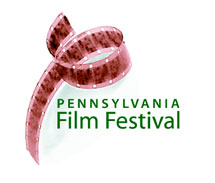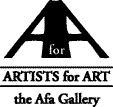|
|
|

silent films live music |
||||||
|
During the first three decades of the twentieth century, silent films were
presented with musical accompaniments. In smaller venues the music typically
consisted of a single piano or organ and the accompanist often followed
cue sheets that were distributed by the film's distributors. But during
the twenties, ornate movie palaces were built in larger cities across America.
These theaters featured orchestras whose conductors composed scores with
the help of in house music libraries. It was often the music, rather than
the movies, that attracted the audience. The piano scores that we associate
with silent films were often added when the films were released on video. The Pennsylvania Film Festival and Scranton's Afa Gallery are proud to present an on-going series of silent films with contemporary musical accompaniment. The films will range across the gamut of silent film. The music will represent different traditions, from improvisational jazz to small ensemble classical music, from rock to country. |

Silent Clown Film Series More Silent Links Another Directory Listing International Links (from Australia) Silent Movie Theatre in LA Welcome to Silent Movies Story of the Theatre Organ International Buster Keaton Society Harold Lloyd David Pearson's Sites The Silents Majority Mont-Alto Orchestra Sources for Silent Films  |
Sounding Silents was a successful, engaging project in 2002. Due to the current lack of a video-projector, Sounding Silents will not be continuing in the forseeable future. If you happen to have a spare projector, let us know.... |
||||
|
On Saturday, October 19 2002, the PAFF and AFA presented Der Müde Tod in the sixth installment of Sounding Silents, silent films with live music. A monthly collaboration of the Artists for Art performance series and the Pennsylvania Film Festival, Sounding Silents is an opportunity to combine classic films with live contemporary music. A $7 donation is encouraged, $5 if you come in costume! Before, during, and after the prime festivities, the audience is encourage to watch one another as well--as all are encouraged to come in costume. Prizes will be awarded for Best OverAll and Best Film Theme. Employees of Industrial Light & Magic and Lucasfilm, Ltd are not eligible to win. Snacks, decoration, music, etc. will help complete your spooky evening! The evenings feature will begin at 8:00 pm, Fritz Lang's Gothic Fantasy Der Müde Tod (The Tired Death) also known as "Destiny." Live music will be performed by Bob & Teo Ventrello, veterans of Sounding Silents and the regional improv scene. As a young couple stops and rests in a small village inn, the man is abducted by Death and is sequestered behind a huge doorless, windowless wall. The woman finds a mystic entrance and is met by Death, who tells her three separate stories set in exotic locales, all involving circumstances similar to hers. In each story, a woman, trying to save her lover from his ultimate tragic fate, fails. The young lady realizes the meaning of the tales and takes the only step she can to reunite herself with her lover. Lang's film, although ambitious, appears to have been a low-budget production. Lang overcomes this shortcoming by the use of mostly simple sets and by foregrounding the actors' physical features. Lang regularly uses light and shadow to highlight aspects within the frame and to add a dynamic edge to the images. The screen is often splintered into darkness and light, with the image sometimes blocked in part of the frame. Lang's sense of experimentation was pushed to its furthest when he filmed the fiery destruction of the poorhouse at night, a feat believed technically impossible because of the limited available film stocks. This footage may not match well with the scenes of the townsfolk, shot at twilight, gathering the water to fight the fire, but the final images of the inferno are impressive. Click here for an in-depth summary and discussion. The event is free and open to the public, although a $7 donation is
encouraged, $5 for those in costume. For further information or to volunteer,
please contact Michael Paulukonis (AFA) at 570.344.0201, or Bruce Thomas
(PAFF) at 570.941.3456. On Friday, September 27 2002, the PAFF and AFA present the The Cabinet
of Dr. Caligari in the fifth installment of Sounding Silents, silent films
with live music. A monthly collaboration of the Artists for Art performance
series and the Pennsylvania Film Festival, Sounding Silents is an opportunity
to combine classic films with live contemporary music. A $7 donation is
encouraged.
The evening's feature will begin around 8:00, Robert Weine's "The Cabinet of Dr. Caligari. Live music will be performed by Diehohewurstindustriellegegen, comprised of Goadheel Schpiederhans (keyboards, guitar, conga, violin), Amaco Gahasapuhmp (keyboards, guitar, dog toy), and Brad Cox (clarinet, keyboards, percussion, dinosaur). The band can best be described as a naked and beserk synthesis of progressive-rock and classical soundscapes and rhythms. Most of the band have recently been hospitalized. Wiene used Expressionist mise-en-scène as a device of expressing subjectivity in The Cabinet of Dr. Caligari. We see distorted, angular buildings only when we are in a subjects head. In particular, it serves to show that we are perceiving things from a madmans perspective. So the Expressionist mise-en-scène was virtually the first tool that filmmakers used to provide a visual representation of insanity. The other thing that makes The Cabinet of Dr. Caligari distinctive is the structure of the story. A young man, Francis, narrates a horror story to an acquaintance. A demented hypnotist, Dr. Caligari, travels from one country fair to another with a coffin-like cabinet. In the cabinet is a somnambulist, Caesare, who obeys Caligaris every command. Francis comes to suspect that the Caesare is responsible for a series of rapes and murders. Eventually, he comes to believe that the hypnotist is actually the demented director of an insane asylum. The director is obsessed with the question of whether a somnambulist can be induced to perform actions that he would abhor while he is awake. The director has, Francis believes, come to the conclusion that that he can resolve this question only by becoming a hypnotist who travels the country inducing a somnambulist to rape and murder. The event is free and open to the public, although a $7 donation is encouraged. For further information or to volunteer, please contact Michael Paulukonis (AFA) at 570.344.0201, or Bruce Thomas (PAFF) at 570.941.3456. On Friday, August 23 2002, PAFF and AFA presents the fourth
installment of Sounding Silents, silent films with live music. A monthly
collaboration of the Artists for Art performance series and the Pennsylvania
Film Festival, Sounding Silents is an opportunity to combine classic films
with live contemporary music. A $7 donation is suggested.
Opening the evening at 8pm is Angela LaPergola and Mary Novaks One Last Hand Before Sunset, a silent melodrama set in the days of the Wild West. A Marywood student film written by Brandon Pieretti and Eric Watins, it stars John Morris as Big Jim, Kay Nickischer as Daisy, Patrick Toomey as the Jack of Hearts, Amy Battle as Rosemary, and John Thomas as Dastardly Dan. This film features an original piano score composed and performed by Joe Moffitt. The feature will begin around 8:45, Charlie Chaplin's The Gold Rush, with live music from Bob Ventrello (percussion-type things), with Julian Sparacino (trumpet), T. Carlos Allen (keyboard, saxophone), and Teo Ventrello (saxophone, flute, electronics). The Gold Rush (1925) is the quintessential Chaplin/Little Tramp film, with a balance of slapstick comedy and pantomime, social satire and emotional and dramatic moments of tenderness. It was Chaplin's own personal favorite film, showcasing the classic Tramp character with his cane, derby, distinctive walk, tight shabby suit, and mustache as a romantic idealist. Classic scenes include the starvation scene of two cabin-marooned prospectors boiling and eating a shoe, the teetering cabin on the edge of a cliff, and Chaplin's lonely New Year's Eve party (with the dancing dinner rolls routine). Early working titles for the film included Lucky Strike and The Northern Story. Chaplin's film was re-released in 1942 with added sound narration and music, both spoken and composed/arranged by Chaplin. The event is free and open to the public, although a $7 donation is encouraged. For further information or to volunteer, please contact Michael Paulukonis (AFA) at 570.344.0201, or Bruce Thomas (PAFF) at 570.941.3456. |
||||||
|
||||||||||||||||||||